Shuri is the capital of the Ryukyu Kingdom. The castle of Nakayama Province was built on this land during the Sanzan period when Ryukyu was divided into three, and it became the capital in 1429 when Ryukyu was unified. Shuri was the political and cultural center of Ryukyu until 1879, when the abolition of feudal domains and establishment of prefectures put the prefectural government in Naha.
Shurijo Castle
Shurijo Castle is the royal palace of the Ryukyu Dynasty. It is located in Shuri in Naha City, and it seems that Shuri was the center of the Ryukyu government during the Ryukyu dynasty era and was also a castle town.
During World War II, Shurijo Castle was the target of an attack by the U.S. military and was almost completely destroyed because the Japanese military command bunker was built there. Shurijo Castle was built in the 1700s before it was destroyed in the war, and some of its remains are still preserved.
The current Shuri Castle was rebuilt in 1992 to commemorate the 20th anniversary of Japan’s return to Japan. At this time, the entire Shurijo Castle became the National Government Okinawa Memorial Park Shurijo Castle Park.
In 2000, the Shuri Castle Ruins were registered as a World Heritage Site as one of the Gusuku Sites and Related Properties of the Kingdom of Ryukyu .
Welcome Gate (Kankaimon)
Shuri Castle is surrounded by walls and has several gates. Kankaimon is the entrance to Shurijo Castle. It is said that it was built in the reign of King Shō Shin, and was once a men-only gate.
I wonder if this gate used to be painted vermillion. Currently, it has a desolate and tasteful appearance.
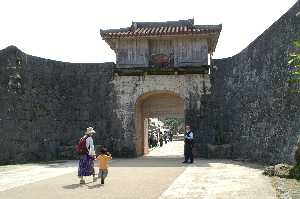
Ryuhi
On the right side of the slope leading from Kankaimon to Zuisenmon, there is a water field called Ryuhi. The area around Shurijo Castle is surrounded by greenery, and it is said that the water that is stored in the ground is gushing out. It was used as a watering place for the people living in the castle.
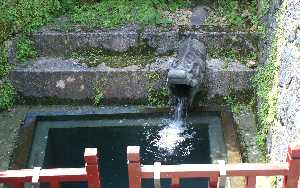
Zuisenmon Gate
Zuisenmon is named after the Ryuhi (dragon gutter) nearby, meaning auspicious spring. Because it is in the place where I climbed the stairs, I feel like “I’m finally entering Shurijo Castle!”
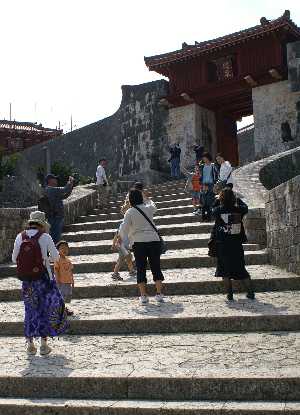
Suimu Utaki
This is a place of worship located in front of the Hoshinmon Gate, which enters the center of Shurijo Castle. A small grove of trees remains, but it seems that the object of worship was also the forest beyond.
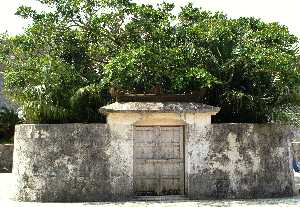
Shurijo Castle Main Hall
The familiar Shuri Castle Seiden. Unlike castles in mainland Japan, the image of a palace is closer. In order to protect the remains of the former Seiden, which burned down during the Battle of Okinawa, the bottom was lifted and made higher than the actual one.
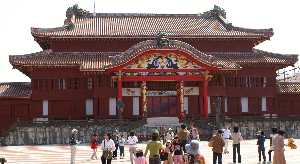
You can enter from the south hall on the right side of the main hall, and you can see the study, the main hall, and the north hall on the left.
If you go up to the south hall and look towards the north hall, you can see the beautiful garden pattern like this. Once upon a time, vassals would have lined up here.
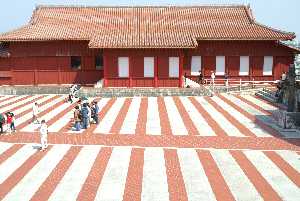
Unfortunately Shurijo Main hall was burnt down by an accidental fire in October 2019. It is in the process of reconstruction.
Usasuka
The interior of the main shrine has also been recreated. When you go up to the 2nd floor, you will find the so-called throne, the osadoko. It is said to have been reproduced based on the portrait of Sho Shin. The surrounding rich colors are more eye-catching than the throne.
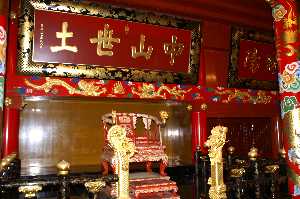
Kyukeimon Gate
The castle wall and Kyukeimon Gate behind the Hokuden. Unlike castles on the mainland, the graceful curves of the castle walls are impressive. The design of the tower gate made on the castle wall is also somewhat Chinese. After visiting Shurijo Castle, tourists exit the castle through this gate.
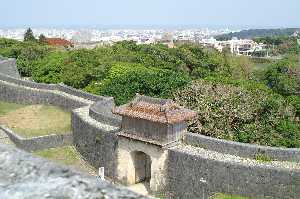
Highlights around Shurijo Castle
In addition to Shurijo Castle, there are several other historical attractions around Shurijo Castle.
This stone gate is located between Shurijo Castle and Shureimon Gate. The stone gate and the surrounding forest are collectively called Sonohyan Utaki. It is designated as a World Heritage Site. Sonohyan Utaki is said to be the place where the Ryukyu Dynasty’s kings prayed for safety when they left Shurijo Castle to patrol their territory.
Main gate of Shuri Castle. This gate used to welcome envoys from China.
Buddhist facilities located north of Shurijo Castle.
It is the tomb site of the Ryukyu Kings built in 1501.
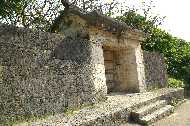
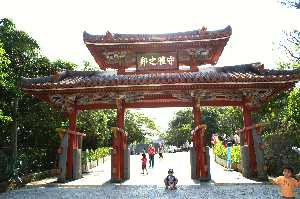 Shureimon
Shureimon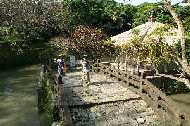 Enkakuji and Benzaitendo
Enkakuji and Benzaitendo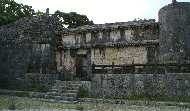 Tamaudun
Tamaudun
Comments
2 responses to “Shurijo Castle Ruins and its surroundings”
[…] 首里城へは宿泊した那覇の国際通りから車で向かいました。カーナビに従って首里に入り、首里城公園管理センターの方から駐車場を探しますがどこも満車で停められません。 […]
[…] 首里城跡 歴代琉球王の居城跡です。 […]